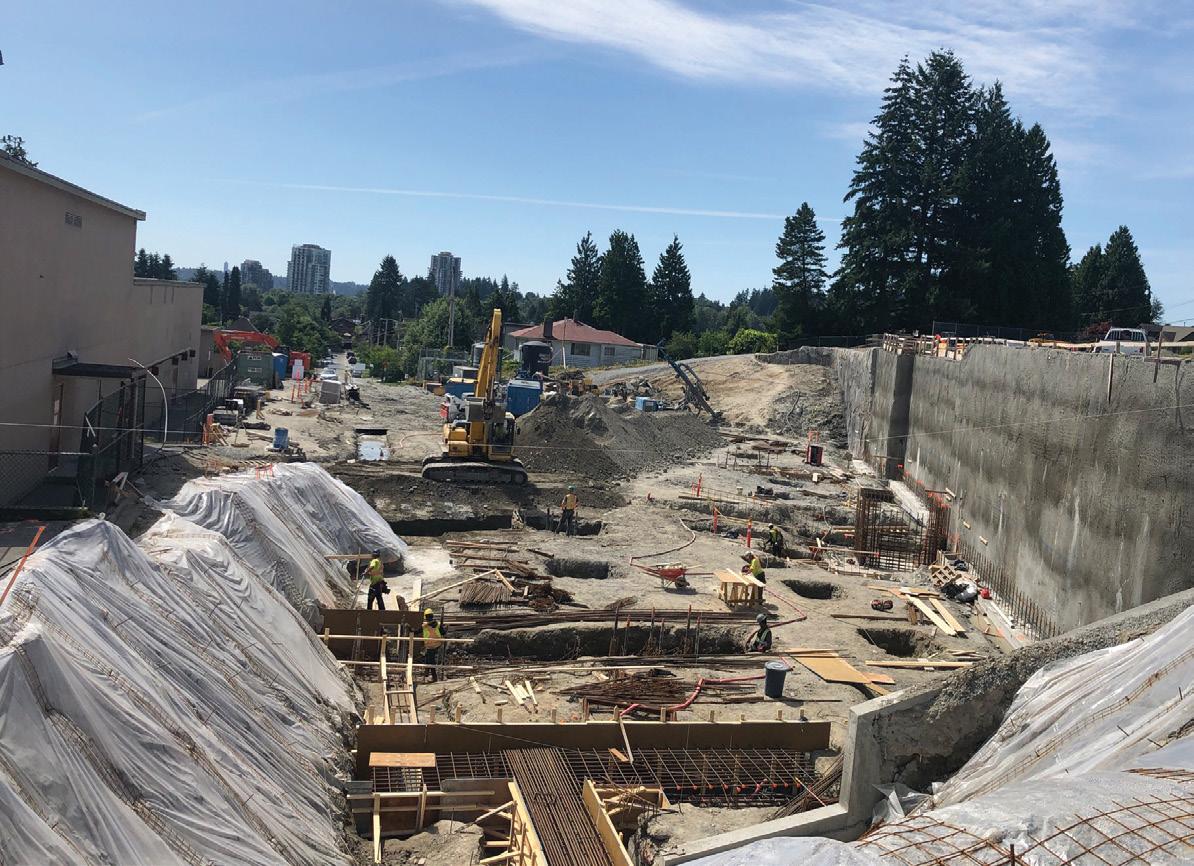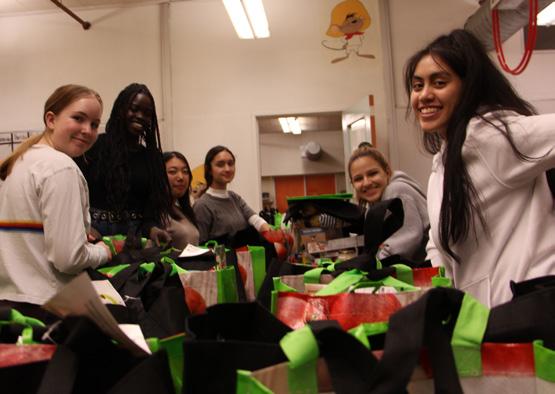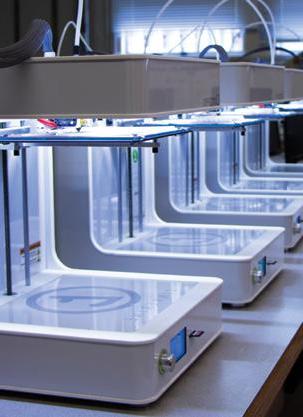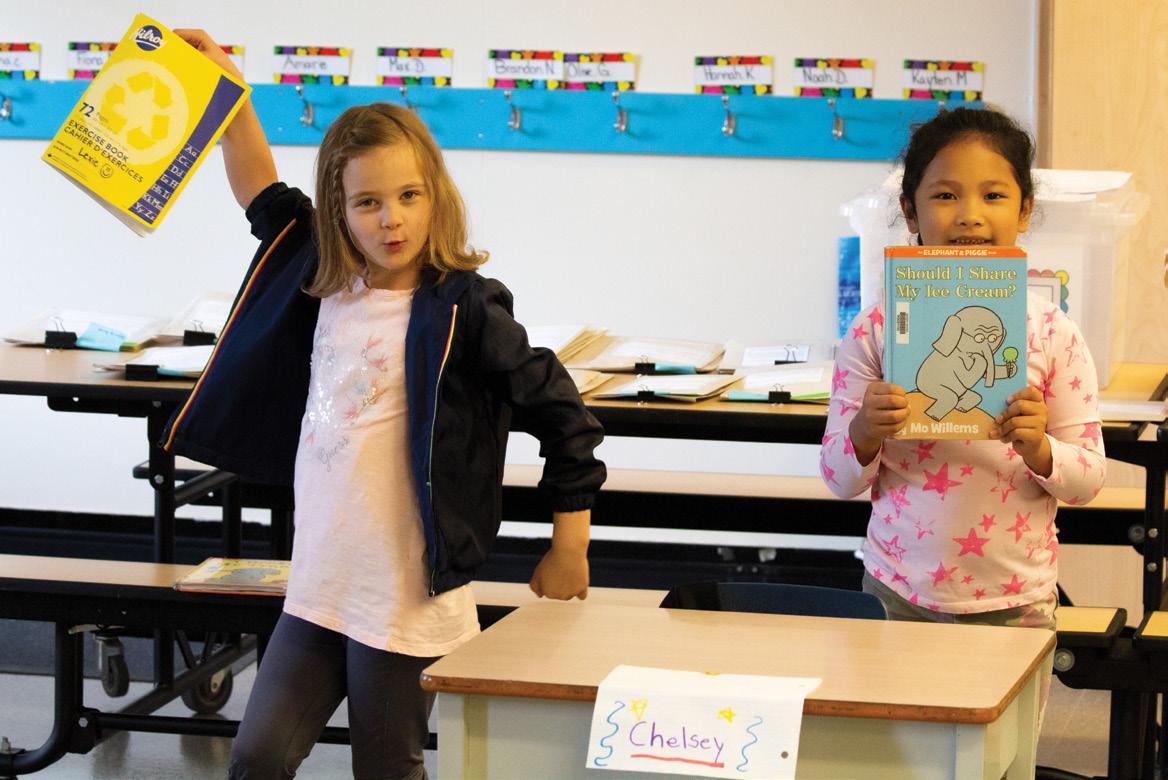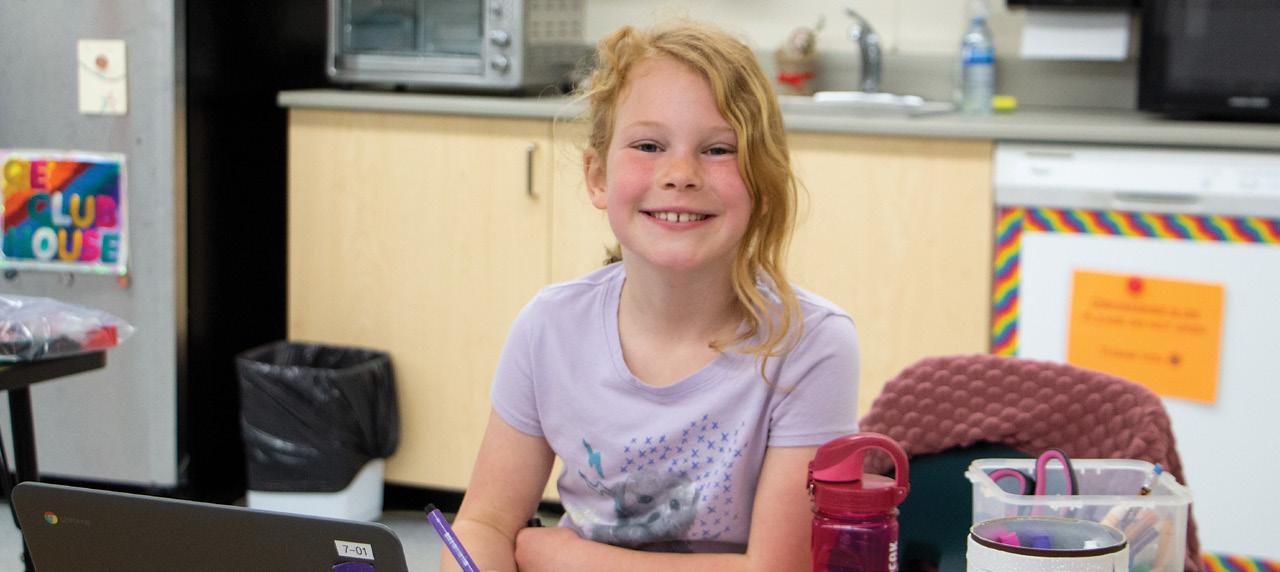
5 minute read
Ensure full participation in learning
Every student deserves an equal chance to learn and grow in school. But some face more barriers than others.
That’s why we’re committed to seeking creative ways to dismantle those barriers – whether they are created by hunger, health, ability, access or any other issue.
Advertisement
We have seen remarkable growth in the graduation rates of our Indigenous learners. In fact for the 2018/2019 school year, we were proud to see our highest ever graduation rate, at 75%.
It shows us that the commitments laid out in our
Enhancement Agreement for Aboriginal Education are working – with strategies to monitor individual students, provide greater professional development and indigenize the curriculum. It also shows us there’s more to be done.
Starting at the end of 2019, the District launched into a formalized Equity Scan, alongside provincial partners. The process has involved deep reflection on the specifics of where we stand with Indigenous learners – looking at the role of pedagogy, assessing data we have on individual student performances and experiences, and addressing the role of policy and governance. The detailed local profile developed over the course of this year will help us build out the action plan that will enable more equitable participation in learning. Access to safe and supportive child care can make a huge difference to a family … sometimes making the difference of a parent being able to work to help support their family or not. That’s why we collaborated with the City of New Westminster to announce the opening of a new child care centre in Queensborough – using land and two portables we had, the City stepped in to pay for the relocation and retrofit needed to make the new spaces possible. The new centre will be operated by our nonprofit partners at Westminster Children’s After School Society. We’re proud of the innovative way our lunch programs help provide food security to local families. So, when the suspension of inclass instruction meant those receiving our supported lunch programs no longer were, we reached out and made a plan. Soon after, families of 100 kids in our district started arriving daily at the New Westminster Secondary School cafeteria, where workers there had shifted to creating nutritious and delicious take-home options to feed kids who continued to count on those lunches.
During the COVID-19 crisis, as soon as it was deemed safe enough to do so, in April there were three limited groups of students brought back into our schools: children of Essential Service
Workers who needed both child care and support for their learning through the day, those with diverse needs to connect them with support to supplement where remote learning couldn’t fulfill their needs, and students in need of access to counsellors and other specialists.
Why do we do all this?
Because the approach we take when it comes for advocating for the unmet needs of our students is based in being reflective, thoughtful and collaborative in our learning. And we continue to push ourselves to do better …
The Inclusive Education Review: Building on wins, improvements for all
What’s working? What do we need to do better? Those were the two key questions that drove this year’s extensive Inclusive Education Review.
The process – the result of a Board proposal – was coordinated by Bruce Cunnings, Director of Instruction for Learning Services, overseen by an advisory committee of representatives from multiple stakeholder groups, and then supported by three consultants who were brought in to serve as guides and outside eyes. Maya Russell and Dee Beattie were the Trustee leads on the review, and they shared this reflection on the process of listening that motivated the project, “This review happened because families opened their hearts to us about their worries and fears for their child. Every parent taking a student to school hopes their child will fit in, feel safe and happy, and be pushed to do their very best. We heard from those parents – and from our district’s dedicated Education Assistants and other staff – that we were doing a lot well, but we could still do more to meet the needs of all learners.”
Over the span of the year the review looked at how the district was doing at delivering support to kids with a wide range of needs: students with established designations for their diverse needs and abilities, students requiring support but without official designations, gifted students, those in alternative education programs, children in care, students participating in Aboriginal Education programs, and those seeking support for their mental health. The extensive information was gathered through surveys, by analysing available data, via reviews of processes and staffing needs, and through of a series of community focus groups and interviews with staff, parents and students. The end result? A report providing a list of 23 recommendations that can be broadly grouped into five key theme areas: student needs, family support and engagement, authentic team approach, highquality professional learning and expert knowledge of effective practices and protocols.
“Parents who have kids with additional needs are already working too hard to support their kids. We heard them clearly: they want more transparency and they need information to be more accessible and easier to navigate” said Bruce Cunnings.
It was findings like this that lead to one of the recommendations: overhauling and creating a more user-friendly handbook … one that can empower parents by making it easier to access available resources. The full report – filled with tangible recommendations like the one above – will soon be released to help map the path ahead. Cunnings also had this to say as this part of the process wrapped, “The goal of the review was simple on the surface, and will be complex and multi-faceted in application: we want to improve education for students who face barriers, and for the staff and parents who support them. Now we’ve confirmed what wins we can build on. Next we’ll use the recommendations to continue to adapt, hone and make improvements over the next few years.”

